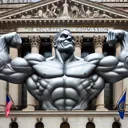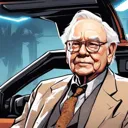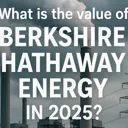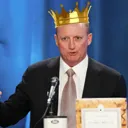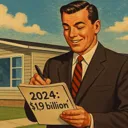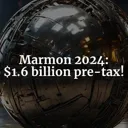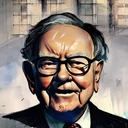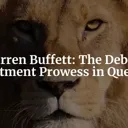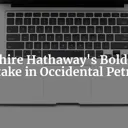Tags: History
This fanpage is not officially affiliated with Berkshire Hathaway: Disclaimer
We will go way back to one of Warren Buffett's first investment decisions with Berkshire Hathaway in the 1960s and span until the late 1990s: Embark on a captivating journey with Berkshire Hathaway's roller-coaster investment saga with Disney, from missed opportunities to strategic decisions and valuable lessons.
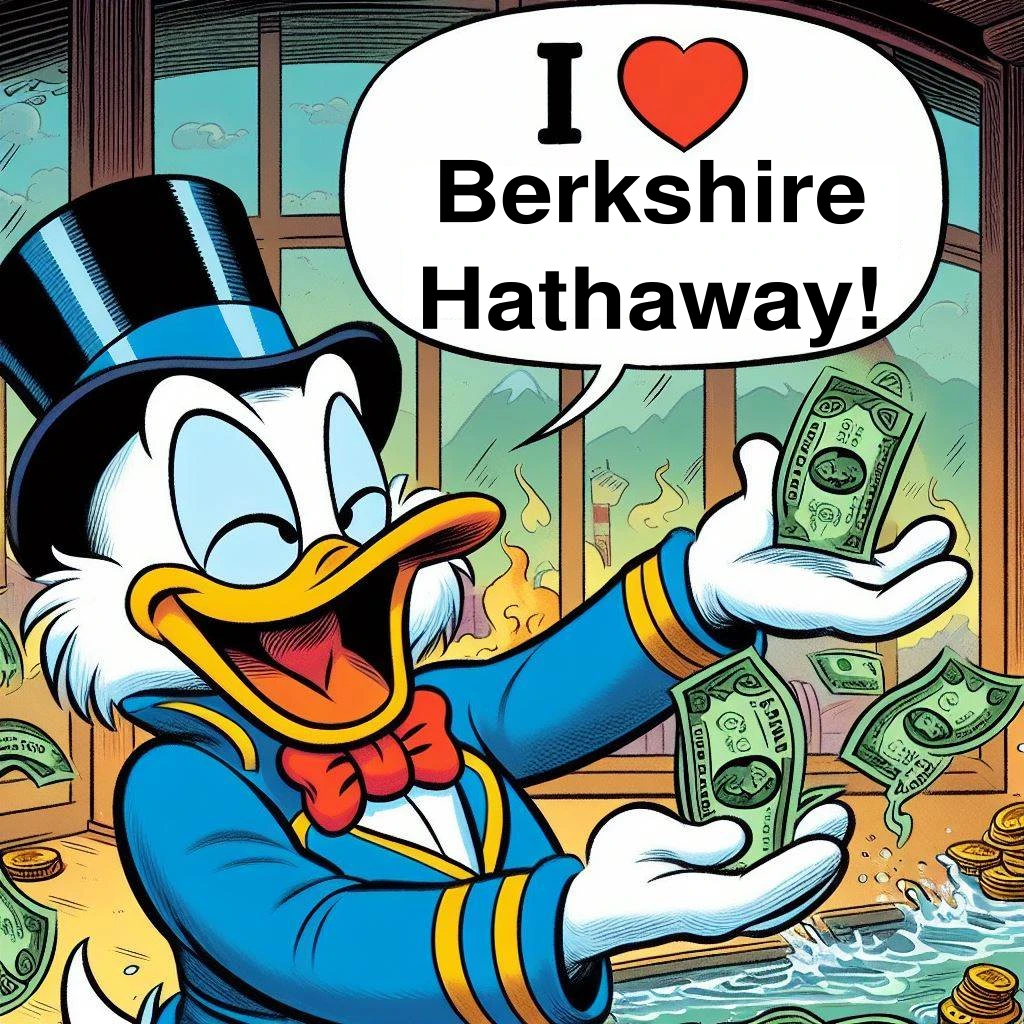
Introduction
Warren Buffett, the legendary investor and CEO of Berkshire Hathaway, is renowned for his astute investment strategies that have yielded remarkable returns over the decades ↗. His philosophy of value investing, focusing on companies with strong brand identity and durable competitive advantages, has guided Berkshire Hathaway to immense success. However, not all of Buffett's investment decisions have turned out as planned. One such example is Berkshire Hathaway's roller-coaster investment journey with The Walt Disney Company—a saga filled with significant financial implications and valuable lessons.
This article delves into the history of Berkshire Hathaway's investment in Disney, exploring the initial acquisition of shares, the decisions to sell, and the consequent financial impacts of these actions. It highlights the strategic decisions made by Buffett, including his reflections on what he has famously termed a "huge mistake" in selling Disney shares too early. For current and potential Berkshire Hathaway shareholders, understanding this case study offers critical insights into the complexities of investment decisions and the importance of long-term strategic thinking.
The narrative will unfold through a detailed examination of historical investments, economic impacts, and strategic decisions, supported by specific facts from various sources 1^-11.
Early Encounters and Initial Investment
In 1966, Warren Buffett made a pivotal move by purchasing a 5% stake in The Walt Disney Company for $4 million. At the time, Disney's market valuation was under $90 million, a figure Buffett found appealing for a company with such a powerful brand and a rich portfolio of intellectual property 1, see also annex below. This initial investment was driven by Buffett's recognition of Disney's enduring brand value and the timeless appeal of its characters and theme parks 2.
The investment quickly yielded a 50% gain, with Buffett selling the stake a year later for $6 million 4. Despite the profit, Buffett later described this decision to sell as a "huge mistake." Reflecting on this early encounter, Buffett acknowledged the potential he had seen in Disney's assets, particularly highlighting the ability to "recycle" iconic characters like Snow White and the economic advantage of owning intellectual properties such as Mickey Mouse, who "doesn't have an agent" 1.
The decision to sell in 1967 was influenced by a variety of factors, including market conditions and other investment opportunities at the time. However, looking back, Buffett lamented the missed opportunity, especially given the exponential growth in Disney's market cap in the ensuing decades. If Buffett had held onto his shares, his initial stake would be worth approximately $20 billion today, illustrating a significant opportunity cost 1.
This early phase of Buffett's investment in Disney is marked by a mix of sharp investing acumen and a rare misjudgment. It underscores the importance of patience and long-term vision in investing—a lesson Buffett himself has emphasized repeatedly in his later years. This segment of Berkshire Hathaway's history with Disney not only reflects Buffett's initial insight into the company's potential but also highlights his capacity for self-reflection and learning from his investment decisions.
Buffett himself has expressed how selling Disney in 1967 was a "terrible mistake". Here's an interesting compilation of interviews over the years:
But Berkshire Hathaway's Disney story did not end there...
Capital Cities/ABC Merger and Its Impact
In 1995, a pivotal merger reshaped the landscape of the media industry when The Walt Disney Company acquired Capital Cities/ABC Inc. This acquisition was not just a significant business move; it was a transformative event that had far-reaching implications for Berkshire Hathaway and its investment portfolio.
The Merger's Genesis and Execution The merger between Capital Cities and ABC, which eventually led to Disney's acquisition, was a landmark in media consolidation 3. Originally, Capital Cities had purchased ABC for $3.5 billion in 1985, a deal that stunned industry observers with its sheer scale and ambition 3. By 1996, Disney saw an opportunity to expand its empire and acquired Capital Cities/ABC for a staggering $19 billion, marking one of the largest media mergers at the time 3.
For Berkshire Hathaway, this merger was particularly significant. As a substantial shareholder in Capital Cities/ABC after enabling the merger, Berkshire ended up with a sizeable stock portion in Disney, integrating these shares into its diverse portfolio 6. Shareholders of Cap Cities were offered various options during this merger, including a combination of cash and Disney stock, which further solidified Berkshire's involvement with Disney 6.
Strategic Benefits and Outcomes The strategic intent behind this merger was clear: to combine Disney's strong entertainment assets with Capital Cities/ABC's vast network of television and radio stations, enhancing both content distribution and reach. Michael Eisner, then CEO of Disney, remarked that "The Disney/Cap Cities deal makes so much sense" 6, envisioning a media powerhouse that could leverage synergies across various platforms.
From Berkshire Hathaway's perspective, the merger was aligned with Warren Buffett's investment philosophy of favoring companies with durable competitive advantages. Disney's brand strength and its iconic intellectual properties represented a compelling competitive edge that was expected to yield long-term benefits 8 - which of course was still true roughly 30 years after Berkshire sold its initial stake!
Financial Performance and Decision-Making Post-merger, Berkshire Hathaway faced decisions regarding the holding or selling of the acquired Disney shares. Financial performance data from Capital Cities/ABC leading up to the merger showed a company on a robust growth trajectory, which likely influenced Berkshire's initial decision to hold onto the Disney shares 3.
However, as the media landscape evolved and Disney's strategic decisions came under scrutiny, particularly under CEO Michael Eisner's later years, Berkshire reassessed its position. The fluctuating market cap of Disney, influenced by both external economic conditions and internal corporate decisions, played a crucial role in Berkshire's strategy regarding these shares.
Berkshire's Exit
The journey of Disney's market cap from 1999 to 2024 illustrates a rollercoaster of valuation changes, reflecting broader market dynamics, strategic corporate decisions, and external economic factors. It is worth looking at some aspects here to understand if Berkshire's later decision to sell Disney yet again was the right move.
Market Cap Fluctuations Disney's market cap fluctuated quite significantly over this 25 year period. For instance, the market cap rose from about $70 billion in March 1999 to around $89 billion in May 2000, before plummeting to $31 billion in September 2002 during the dot-com bust 10. Subsequent years saw recovery and growth, with the market cap reaching $350 billion (!) in March 2021, showcasing Disney's brand resilience and adaptability 10. However, the current market valuation is roughly $200 billion after the pandemic-driven fantasies about streaming businesses started to crumble. Here's a short table of some significant highs and lows of that period 910:
| Date | Disney Market Cap / Billion $ |
|---|---|
| March 1999 | 70 |
| May 2000 | 89 |
| September 2002 | 31 |
| September 2008 | 61 |
| March 2009 | 32 |
| March 2021 | 350 |
| September 2023 | 150 |
| April 2024 | 207 |
Berkshire Hathaway might have anticipated these fluctuations. Notably, in 1999, Berkshire reduced its Disney stake by over 80% over two quarters, a period during which Disney shares had gained almost 24% 7. This decision to sell coincided with a broader strategic realignment by Buffett, who may have been reconsidering the "forever" holding period in light of new market realities and missed opportunities in other sectors like technology 2.
Looking at Disney's dropping valuation to $31 billion in 2002, Berkshire's decision to completely exit its position in 1999 11 seems like a great decision.
The potential impact of missed opportunities in technology investments, such as Google and Amazon, might have also influenced Buffett’s strategy with Disney. Berkshire Hathaway observed substantial returns from tech companies (previously) outside the company's circle of competence, the decision to reduce the Disney stake could be seen as a move to reallocate resources to potentially higher-growth areas 2 or simply to trim the risk for Berkshire amid sky-high valuations before the dot-com bust. Notably, it took more than a decade for Berkshire to hop on the forceful Apple train in 2016 ↗.
Despite the comparably fast sale of Berkshire's Disney stake, Buffett's investment philosophy generally emphasizes long-term holdings, as evidenced by his long-term commitment to stocks like Coca-Cola 1. His personal interactions with Disney executives, including meetings with Walt Disney himself, likely played a role in his initial enthusiasm for Disney's stock. However, the shifting dynamics in the entertainment industry and the broader economic landscape necessitated a reevaluation of this stance.
Thus, Berkshire Hathaway's journey with Disney, from a first acquisition in 1966 over the acquisition of shares through the Capital Cities/ABC merger to the strategic selling in 1999, underscores the complexities of maintaining a long-term investment in an evolving industry. This case study not only highlights the challenges of investment for Berkshire but also reflects Buffett's adaptability in his investment approach, balancing long-held philosophies with responsive strategic decisions.
Also from a financial point of view, the approximate results for Berkshire Hathaway's Disney transactions look quite decent 1 11:
| Year | Action | Value | Gain/Loss | Percentage |
|---|---|---|---|---|
| 1966 | Buy | $4 million | ||
| 1967 | Sell | $6 million | $2 million | 50% |
| 1995 | Buy | $281 million | ||
| 1999 | Sell | $1,536 million | $1,255 million | 446% |
Note: We have derived cost, value and gain of Berkshire Hathaway's Disney stake for 1999 based on the annual report 1998 11. Hence, numbers are approximate. It's also very interesting that in the 1960's a considerable stake was in the millions, while in the 1990's billions are the correct gauge. Well, there might have been some money-printing in-between!?
Lessons Learned and Strategic Insights
From Berkshire Hathaway's journey with Disney, several key lessons emerge that have shaped subsequent investment decisions. One significant takeaway is the importance of patience and long-term vision in investments. Buffett has expressed regret over selling Disney shares prematurely, recognizing it as his "biggest mistake" which cost him and Berkshire shareholders approximately $19 billion in potential gains 14. This experience underscored the value of holding onto investments in high-quality companies, even when faced with short-term fluctuations.
This lesson was evident in Berkshire's later investment strategies, particularly in technology companies like Snowflake. Despite traditionally avoiding tech stocks and IPOs, Berkshire invested $730 million in Snowflake's IPO, reflecting a strategic shift influenced by the understanding of the tech sector's growth potential and the importance of diversifying portfolio holdings 5.
Buffett's philosophy of deeply understanding a business before investing, which might have been momentarily overlooked during his early Disney days, has been a guiding principle in subsequent investments. This approach ensures that Berkshire invests in companies whose business models are robust, sustainable, and aligned with long-term market trends.
The strategic insights gained from the Disney experience have also influenced how Berkshire Hathaway manages its investment portfolio. Recognizing the importance of brand value and intellectual property, Buffett has shown a preference for companies with strong consumer recognition and sustainable competitive advantages, mirroring the qualities that initially attracted him to Disney.
Moreover, Buffett’s reflections on his Disney sale might have reinforced a broader investment strategy focused on patience, understanding, and the long-term potential of investments rather than short-term gains. This strategy is crucial in navigating the complexities of modern markets, where rapid changes in technology and consumer behavior can quickly alter the business landscape.
Hence, Berkshire Hathaway's experience with Disney has provided valuable strategic insights that continue to influence its investment decisions. These lessons emphasize the importance of brand value, the strategic management of intellectual property, and the need for a deep understanding of and patience with investment choices. As Buffett himself has noted, sometimes the best action is not selling, but holding and understanding the enduring value of a great company 1.
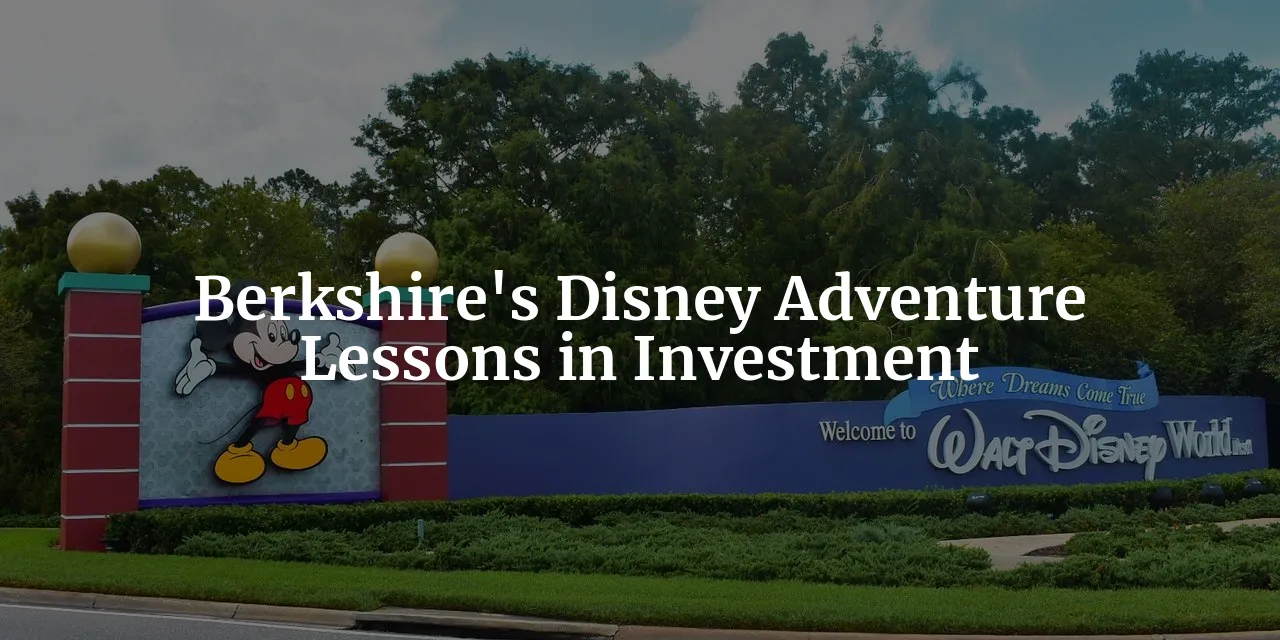
Conclusion
In retrospect, Berkshire Hathaway's journey with The Walt Disney Company encapsulates a tale of missed opportunities, strategic decisions, and valuable lessons for investors. Warren Buffett's initial foray into Disney in 1966, with a 5% stake for $4 million, marked the beginning of a relationship that would have profound implications for Berkshire Hathaway's investment portfolio 1. However, Buffett's decision to sell his Disney shares in 1967, despite a 50% gain, was later regretted as a "huge mistake" that cost him and Berkshire shareholders approximately $19 billion in potential gains 14.
The subsequent merger between Capital Cities and ABC, leading to Disney's acquisition in 1995, further intertwined Berkshire Hathaway's fate with Disney's 3. The strategic benefits of this merger, aimed at combining Disney's entertainment assets with Capital Cities/ABC's media network, highlighted the potential synergies that Buffett initially saw in Disney's brand strength and intellectual property 6. However, as Disney's market cap fluctuated over the years, influenced by external economic conditions and internal corporate decisions, Berkshire Hathaway made strategic decisions to sell its Disney stake in 1999 711.
The fluctuations in Disney's market cap from 1999 to 2024 showcased the challenges of predicting long-term outcomes in dynamic markets, reflecting the complexities of investment decisions in an ever-evolving industry 10. While Buffett's investment philosophy emphasizes patience and understanding, his experience with Disney underscored the importance of adaptability and learning from past mistakes 14. The role of intellectual property and brand value in Disney's success further highlighted the enduring appeal of strong consumer recognition and sustainable competitive advantages, qualities that Buffett has consistently favored in his investment choices 1.
Berkshire Hathaway's Disney journey offers critical insights for investors, emphasizing the importance of long-term vision, adaptability, and learning from past investment decisions ↗. As Warren Buffett himself has noted, sometimes the best action is not selling but holding onto investments in high-quality companies with enduring value 1. By reflecting on the complexities of investment decisions and the challenges of predicting market outcomes, investors can glean valuable lessons from Berkshire Hathaway's experience with Disney. As Buffett's investment philosophy continues to guide Berkshire Hathaway's strategic decisions, current and future shareholders are encouraged to explore the enduring principles of value investing and the importance of patience in navigating the unpredictable nature of the market.
In the words of Warren Buffett, "If I thought the children of the world were going to want to be entertained 10 or 20 years from now, I would probably bet on Disney" 1 ↗. This sentiment encapsulates the enduring value of investing in companies with strong brand recognition and sustainable competitive advantages, a principle that has guided Buffett's investment journey and continues to shape Berkshire Hathaway's strategic decisions.
Annex: The Role of Intellectual Property and Brand Value
Disney's intellectual property (IP) portfolio, featuring iconic characters like Mickey Mouse and Snow White, has been a cornerstone of its brand value and a significant attractor for investors like Warren Buffett. Initially, Buffett's interest in Disney was piqued by its undervaluation and the potential of its IP, which he saw as a unique asset that could offer long-term value 1. The brand power of Disney, as Buffett noted, is nearly unparalleled, likening it to other global giants like Coca-Cola in terms of name recognition 1.
The enduring appeal of Disney’s brand fits perfectly into Buffett's investment criteria, which favor companies with strong, recognizable brands that hold a promise of lasting value. He famously highlighted the cyclical nature of Disney's IP benefits, comparing the re-release of movies like "Snow White" to an oil field that replenishes itself, thus providing continuous returns on the original investment 1.
Moreover, Buffett appreciated the business model advantages presented by Disney's characters, such as Mickey Mouse, who "doesn't have an agent." This means that Disney retains full control over its characters, minimizing external pressures and maximizing profit potentials from merchandise, theme parks, and media 1.
The introduction of Disney+ has been a strategic extension of Disney's ability to leverage its IP in the digital age. Since its launch, Disney+ has amassed 152.1 million subscribers, underscoring the strong consumer demand for Disney’s content 4. This move not only expanded Disney's market valuation but also reinforced its brand's relevance in a rapidly changing entertainment landscape.
Buffett's reflections on Disney's global brand value are telling: "Disney means something to billions of people... You have got something in your mind about Disney" 1. This level of brand penetration is rare and provides Disney with a competitive edge that is difficult for competitors to replicate.
Investing in a company heavily reliant on intellectual property, however, comes with its risks. Market trends, technological advancements, and shifts in consumer preferences can all impact the relevance and profitability of IP. Nonetheless, Disney's proactive approach in adapting its IP to new platforms and audiences—while maintaining the nostalgic value that originally made its brand powerful—suggests a model for how companies can navigate these challenges effectively.
References
-
Warren Buffett has touted Disney's brand, trumpeted Snow White and Mickey Mouse, and bemoaned selling the stock. Here are his 10 best quotes about the media giant. - markets.businessinsider.com ↩↩↩↩↩↩↩↩↩↩↩↩↩↩↩↩↩↩↩
-
Buffett's $18B miss on Disney - www.readtrung.com ↩↩↩
-
Warren Buffett's $19 Billion Mistake Can Be Your Historic Opportunity | The Motley Fool - www.fool.com ↩↩↩↩↩
-
Warren Buffett Must Not Repeat the Walt Disney Mistake With Snowflake - www.ccn.com ↩
-
Chairman's Letter 1995 - www.berkshirehathaway.com ↩↩↩↩
-
Berkshire Trims Disney Stake 80% Over 2 Quarters - www.latimes.com ↩↩
-
Warren Buffett’s 25 Most Important Investments Ever(Ranked) - www.linkedin.com ↩
-
Yahoo Finance Stock Quotes - finance.yahoo.com; Berkshire's market cap is at around $870 billion while The Walt Disney Company is at around $207 billion as of April 26th, 2024. ↩
-
The Walt Disney Company (DIS) - stockanalysis.com ↩↩↩↩
-
That Berkshire Hathaway exited Disney in 1999 can be inferred from a comparison of the annual reports for 1998 and 1999. As of December 31st 1998, Berkshire owned 51,202,242 shares of "The Walt Disney Company", acquired for $281 million, worth $1,536 million at that time, see Berkshire Hathaway Annual Report 1998 - www.berkshirehathaway.com, whereas the annual report for 1999 does not show a holding in Disney anymore. ↩↩↩↩↩
-
The original character Scrooge McDuck has different eyes, wears glasses and exhibits other differences to the shown "famous rich duck". As a sidenote: Forbes ranked Scrooge on their "Forbes Fictional 15" list as #1 richest fictional character, see #1 Scrooge McDuck (2013) - www.forbes.com. In the link, a net worth estimate of $65 billion is provided for 2013. Let us check it. His famous Money Bin of, say, around (50ft)³ = 250,000ft³ has around 7,079 million cm³ (yes, it's a small one). At a gold density of 19g/cm³ this makes the Money Bin carry around 373 tonnes of gold. 1 tonne of gold, 32,274 ounces, with 1 ounce at north of $2,300 at the time of writing, is worth around $70 million. That makes Scrooge's gold holdings estimate around $70 million per 1 tonne * 373 tonnes = $26 billion. Scrooge might only have one quarter of his net worth in gold, since many other holdings were mentioned including mining (we have not seen the latest annual report, though). Hence, in 2024, Scrooge might be clearly north of $100 billion in net worth. Since Scrooge was born in 1867 (age 157), this comes as no surprise due to the 8th world wonder of compounding! Note that numbers given in the comic series hugely exceed our estimate as Scrooge claimed to be a "quadzillionaire" among other amounts given, see Scrooge McDuck - en.wikipedia.org. ↩
